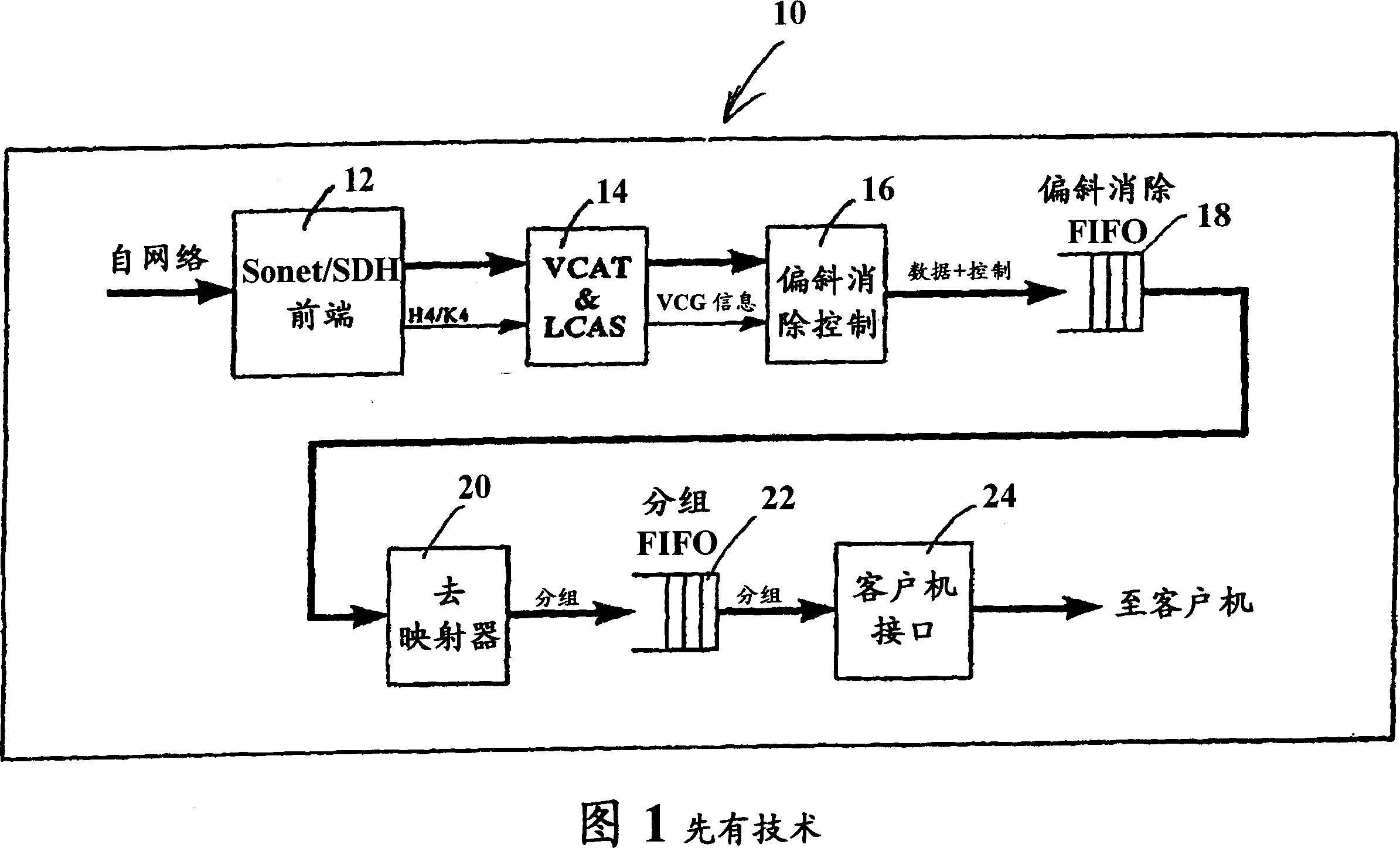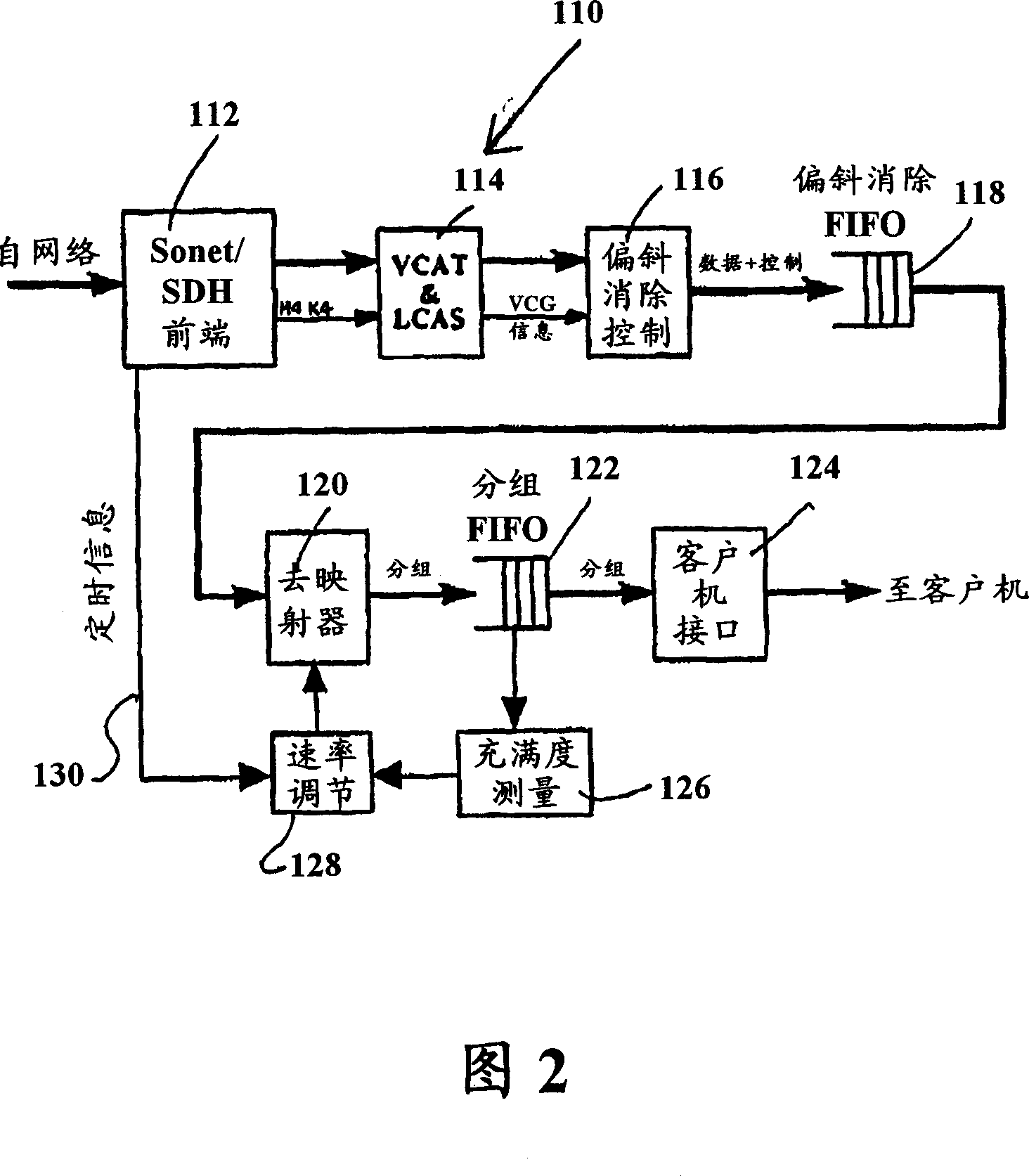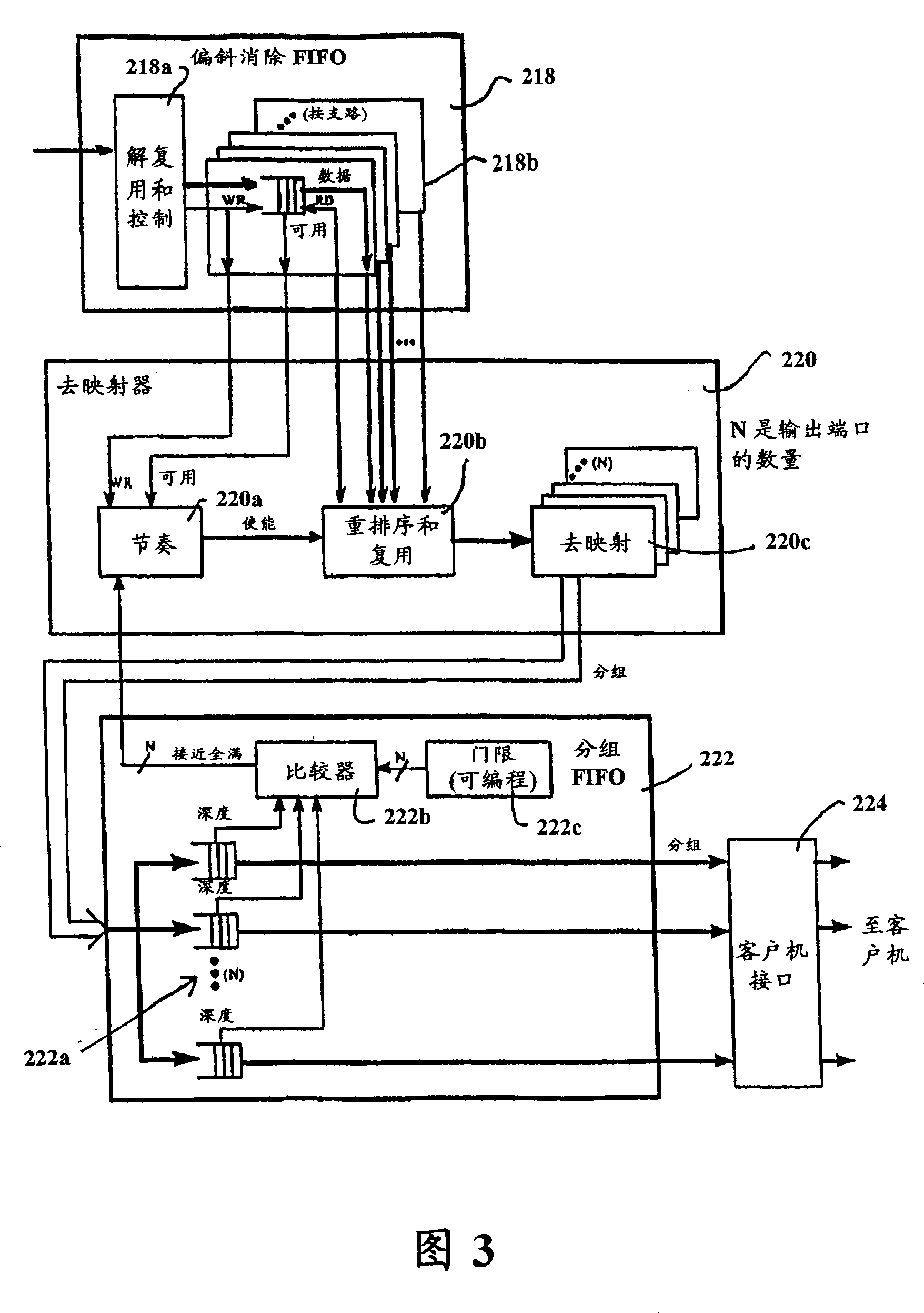Methods and apparatus for implementing link capacity adjustment scheme sinking with rate based flow control
A rate and input rate technology, applied in the field of preventing data loss on LCAS sinks, and can solve problems such as complex control mechanisms and head-of-line blocking
- Summary
- Abstract
- Description
- Claims
- Application Information
AI Technical Summary
Problems solved by technology
Method used
Image
Examples
Embodiment Construction
[0032] Referring now to FIG. 2, a system 110 for recovering packetized (eg, Ethernet) data from SONET / SDH considering VCAT and LCAS is illustrated in accordance with the present invention. Apparatus 110 is similar in some respects to apparatus 10 described above, and like reference numerals (incremented by 100) denote like functional blocks. The front end block 112 performs the well-known SONET / SDH functions of descrambling, framing, pointer tracking and alignment. The VCAT and LCAS block 114 extracts the VCG differential delay information and VCG configuration information embedded in one of the SONET / SDH overhead bytes (H4 in high order, K4 in low order). This VCG information is then passed to the deskew control block 116 along with the payload. The deskew control block 116 performs two functions. First, it calculates the amount of differential delay encountered by each branch based on the H4 / K4 frame counter. It then stores the branches in the deskew FIFO 118 for differen...
PUM
 Login to View More
Login to View More Abstract
Description
Claims
Application Information
 Login to View More
Login to View More - R&D
- Intellectual Property
- Life Sciences
- Materials
- Tech Scout
- Unparalleled Data Quality
- Higher Quality Content
- 60% Fewer Hallucinations
Browse by: Latest US Patents, China's latest patents, Technical Efficacy Thesaurus, Application Domain, Technology Topic, Popular Technical Reports.
© 2025 PatSnap. All rights reserved.Legal|Privacy policy|Modern Slavery Act Transparency Statement|Sitemap|About US| Contact US: help@patsnap.com



